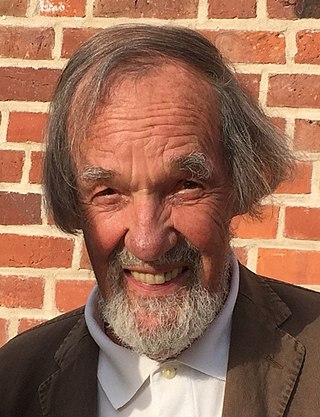Top Qs
Timeline
Chat
Perspective
Jürgen Ahrend
German organ builder (1930–2024) From Wikipedia, the free encyclopedia
Remove ads
Jürgen Ahrend (German pronunciation: [ˈjʏʁɡn̩ ˈʔaːʁənt]; 28 April 1930 – 1 August 2024) was a German organbuilder and technician. He restored instruments such as the Gothic Rysum organ and the Arp Schnitger organs of the Martinikerk in Groningen, Netherlands, and of St. Jacobi in Hamburg as well as building organs of his own creation. He presided over his eponymous firm, Jürgen Ahrend Orgelbau in Leer, from 1972 to 2004, operating internationally.
Remove ads
Life and career
Summarize
Perspective
Early and personal life
Ahrend was born in Treuenhagen, a village near Göttingen, on 28 April 1930.[1][2] His father, Heinrich Ahrend, was an administrative employee by profession; however, he maintained a stringent passion for music, being a singer and choir director who also played various instruments. Following the destructive events of World War II, his mother Elisabeth became a single mother to her five children (including Jürgen). His first marriage was to Margarete Bartels; following their divorce, she married the Dutch organist Klaas Bolt. They had five children: two of them have taken up musical professions, Seivert and Heiko (musicians, composers, and music producers). His most famous child, Henrik (born 11 August 1963), is the current head of the organbuilding firm he founded.
Organbuilding and workshops
From 1946 to 1948, he held an apprenticeship in the firm of Paul Ott, a Neo-Baroque organbuilding firm in Göttingen.[2][3] He then worked for the firm as an employee. He undertook study travel with Gerhard Brunzema, who had also been an apprentice of Ott, to European organ builders, Metzler Orgelbau in Switzerland, Flentrop in the Netherlands and Marcussen & Søn in Denmark.[4] The two formed a partnership in Leer–Loga, Lower Saxony in 1954, which they called Ahrend und Brunzema.[1][2][3] They produced 54 new organs and restored nineteen, until Brunzema left the firm in 1972[1] to work in Canada.[5] They restored the original tuning of organs from the Renaissance and Baroque eras, beginning with the Westerhusen organ, the Uttum organ and the Gothic Rysum organ.[2][3] When they built a new organ in Baroque style for the Zorgvlietkerk in Scheveningen in 1958, they received international recognition.[2][5] They built a new transept organ for the Oude Kerk in Amsterdam and a new organ for the Doopsgezinde Kerk in Haarlem, and restored instruments of the Waalse Kerk in Amsterdam and the Hooglandse Kerk in Leiden.[5]

The workshop operated as Jürgen Ahrend Orgelbau from 1972.[3][4] Ahrend was also commissioned to restore the organs and their tuning for the Arp Schnitger organs in the Martinikerk in Groningen (including the main organ in the west gallery), the organ of St. Jacobi in Hamburg and organ of St. Ludgeri in Norden.[3] In Hamburg, the organ pipes had been removed from the organ case for safety in 1942. The church was destroyed by bombing. In the restored church, Ahrend used the historic pipes in a new case to revive the sound he had in mind.[5]
Ahrend used several historic building techniques in his restoration work. He devoted about half of the workshop's time to restoration. He restored internationally, such as the organ of Frederiksborg Castle in Hillerød and the Martinikerk.[1] He was interviewed extensively in the film Martinikerk Rondeau, released in 2009.[6]
Since 2005 his son Hendrik Ahrend has run the workshop. Jürgen Ahrend became involved in the organ festival Orgelfrühling in Krummhörn from its beginning. The 2020 edition was dedicated to him to honour his 90th birthday, but it could not be held until 2022 due to the COVID-19 pandemic.[3]
Ahrend died in Leer, Lower Saxony, on 1 August 2024, at the age of 94.[2][3][7]
Remove ads
Awards
- 1962, Staatspreis für Kunsthandwerk Niedersachsen (State Prize for Craftsmanship in Lower Saxony)[4][8]
- 1986, Lower Saxony State Prize for culture[3][9]
- 2000, Honorary doctorate of law from the Monash University, Victoria, Australia[3][10]
- 2007, The Buxtehude Prize from the city of Lübeck.[3][11]
Works
- Roman number = number of manuals
- Arabian number = number of stops
- P = independent pedal
- p = pull down pedal
- R = restoration
- Rc = reconstruction
- NB = new built
Ahrend & Brunzema (1954–1971)
Jürgen Ahrend (1972–2004)
Hendrik Ahrend (from 2005)
Remove ads
References
Further reading
External links
Wikiwand - on
Seamless Wikipedia browsing. On steroids.
Remove ads















































































